The Perfect Trade Show Booth Requires a Great Team
 Have you ever been to a trade show and see a great exhibit, but no one is there to greet you? Or you start to approach a booth and see a couple disengaged people slumped in chairs, hiding? Or the booth staff is occupied talking on their cell phones and texting? My bet is that you just passed this exhibit by.
Have you ever been to a trade show and see a great exhibit, but no one is there to greet you? Or you start to approach a booth and see a couple disengaged people slumped in chairs, hiding? Or the booth staff is occupied talking on their cell phones and texting? My bet is that you just passed this exhibit by.
The team who staffs your booth is a critical part of a successful event. Make sure they are properly trained, motivated and equipped to succeed.
- Select people to staff the booth who have the right attitude. You need people who are open and approachable, who can smile when their feet hurt, and who really enjoy meeting new people.
- Train your team so that they know the main messages you want to communicate at the show, and can answer most customer questions. Knowledgeable people in your booth will generate higher quality leads and more sales.
- If product demonstrations or structured sales presentations are part of the exhibit, make sure that every member of your team is at least loosely scripted and has rehearsed.
- If you have any special promotions, make sure the booth staff understands all the details and deal terms.
- Have a formal staff schedule and base the staff rotation on the expected trade show volume at given time. Develop a contingency plan to adjust staffing if needed.
- Establish a dress code which is consistent with your company’s or organization’s brand and the booth theme.
- Formalize the lead qualification process and make sure everyone uses the same criteria to qualify prospects and record contact information.
What do you think is the most important factor when selecting someone to staff your trade show booth: product knowledge or positive attitude?
The Tradeshow Survival Kit
When planning to exhibit at tradeshows, it’s impossible to forget the big items, such as your display, accessories, banner stands, banners, signs, and your booth staff. Unfortunately there are many other small items that need to be brought along with you that often fall between the proverbial cracks when packing for a tradeshow. Often, these small items can cost a ridiculous amount of money when you have to resort to buying them on-site or extremely inconvenient when you have to go off-site in search of them.
So to make it easier, we’ve compiled a list of items that you shouldn’t leave the office without when en route to a tradeshow. Most are small enough to either be brought in luggage by a staff member or shipped in one box to the event or to your hotel.
Tradeshow survival kit items include:
An extension cord. Will come in handy when you realize how far equipment or lighting is from the nearest outlet.
Scotch, Gaffers and masking tape. Can be used from everything from holding down a tablecloth to sealing boxes for shipment.
Stapler. What good is a stapler without staples? Pack extra!
Paper clips. What can a paperclip not do?
Velcro dots or strips. Use to adhere signage to you’re the walls of your display, hold up banners or keep tablecloths in place.
Sewing kit. Prevent wardrobe disasters with this handy kit.
Safety pins. MacGyver once saved the world with a safety pin and a rubber band. Enough said.
Push pins. Use to hold signage in place, posts messages or notes, or awaken sleepy staff.
Black permanent markers. Use for labeling boxes or marking items that you don’t want walking away.
Blue, red, and black pens. Yes, attendees steal pens so pack plenty.
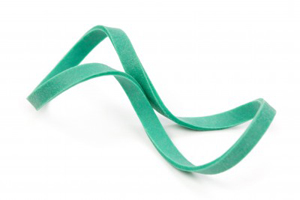 Notebooks or pads of paper. Keep notes, reminders for staff, etc.
Notebooks or pads of paper. Keep notes, reminders for staff, etc.
Rubber bands. See safety pins.
Small hammer and screwdriver. You don’t want to have to rely on on-site employees to loan you these handy essentials.
Spare pair of eyeglasses. Would be a really inconvenient time to not be able to see.
Wrist watch. Very important to keep scheduled meetings with the press or customers running on time.
Aspirin, Ibuprofen or other medications. Headaches are common at tradeshows due to late nights, over-imbibing, and lack of sleep.
Tissues. You never know when you’ll need these.
Paper towels. Prevent food or drink spills from ruining equipment.
Garbage bags. Especially handy when cleaning up after show is over.
Hand sanitizer or wipes. Shaking hands is a great way to make a good first impression, but it can also be a great way to catch a cold or other illness.
Alka-Seltzer. Plop, plop, fizz fizz…relief.
Throat lozenges. Everyone’s voices will be tired and sore from all the talking and dry air at tradeshows.
Lip balm. Indoor dry air and lots of talking equals chapped lips.
Eye drops. Won’t make up for lost sleep, but will help.
Comfortable flat shoes. Sure heels make you look great, but after hours of standing up, you’ll be happy you packed a more comfortable alternative.
Stain removal wipes. That meatball sub seemed like a good idea.
Granola bars. Perfect for a quick nourishment break.
Mouthwash or breath mints. Everyone has been trapped into talking to someone who has “death breath.” Don’t be that someone.
Extra batteries for equipment. This is one of the many items you’ll pay an arm and a leg for at the conference center’s gift shop.
Small digital camera. Take pictures of your booth, empty before the show to best show signage, displays, etc., and again while it’s filled with eager attendees for future promotional uses.
What’s on your must-have list? Share in the comments section.
Insuring Your Tradeshow Display: What Exhibitors Need to Know
Consider Insuring Your Trade Show Display
Tradeshow displays are very expensive marketing investments and as such, you should consider insuring your properties in case of loss or damage. While the likelihood of a significant loss is rather remote, it is possible. Natural disasters can strike the warehouse where your exhibit is stored or even convention centers (A tornado did considerable damage to the Georgia World Congress Center in a few years back).
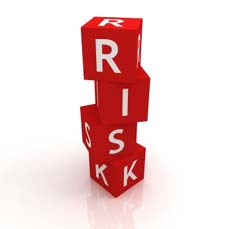 Fire is the most common threat to your trade show displays. Trucks can be involved in accidents and trailers have been known to catch on fire due to tire problems. Warehouses are not immune to fires and in 1967 the entire McCormick Place Convention Center was destroyed by a fire with a large trade show set up and ready to open. The fact that losses like these are unlikely makes insuring display materials affordable.
Fire is the most common threat to your trade show displays. Trucks can be involved in accidents and trailers have been known to catch on fire due to tire problems. Warehouses are not immune to fires and in 1967 the entire McCormick Place Convention Center was destroyed by a fire with a large trade show set up and ready to open. The fact that losses like these are unlikely makes insuring display materials affordable.
Exhibit companies, for the most part, do not insure client-owned exhibits stored in their warehouse. Trucking companies normally provide very inadequate coverage based on weight (usually around $1.00 per pound).
If you are concerned about this, you should first check with your accounting department to determine what your company policy is regarding casualty insurance. Many large companies are “self insuring,” meaning that they simply pay for any losses themselves, rather than pay for insurance. Small and medium companies usually have some type of insurance coverage, but all assets need to be recorded, especially those that travel around like displays.
If you would like to insure your display, get an up to date inventory list and have your tradeshow exhibit company provide you with the replacement cost of the display. Be sure to update this information annually. Current photos of the display set up will be important if you have a loss.
If you do decide to purchase coverage, make sure that it covers your materials 24/7 no matter where they are. Need trade show advice? Let’s Talk.
Determine Trade Show Value with the 2 Minute Challenge
As tradeshow exhibit professionals, we are constantly faced with justifying the value of participating in shows. The cost of exhibiting, the travel, diminishing show attendance, and the economy have turned up the heat.
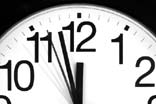 One basic test that helps me answer these challenges is to pose a simple question to any bottom line accountable executive. The question: if you were given 2 minutes to explain the advantages of dealing with your company to a person who regularly buys the same products and services from a competitor, do you think that you could convince them to give your company a try?
One basic test that helps me answer these challenges is to pose a simple question to any bottom line accountable executive. The question: if you were given 2 minutes to explain the advantages of dealing with your company to a person who regularly buys the same products and services from a competitor, do you think that you could convince them to give your company a try?
If the answer to this question is no, perhaps they should consider working for the competitor or at least reexamining your product or service offering.
Most confident executives would gladly accept this challenge. The best place to set the stage for this scenario is at a tradeshow or convention. Couple this amazing opportunity with the fact that the buyer has paid their own way to the show and that they are receptive to this pitch in the show environment and you can easily see the value proposition that tradeshows create.
The clients that I have worked with over the years that have the most success at shows have enlisted the help of a tradeshow pro to put together an integrated tradeshow marketing plan that will result in producing the maximum number of these opportunities. Our exhibit management program focuses on producing successful shows with minimum stress and maximum value. Our on-site trade show specialists are there the entire time, from set-up to tear-down – Let’s Talk.
Improve Your Trade Show ROI with Hospitality Suites
Ever considered a Hospitality Suite to improve your trade show results?
Many successful exhibitors use hospitality suites to provide additional sales opportunities at shows. This is normally a meeting room or suite in the headquarters hotel or a hotel attached to or near the convention center. The room is set up with comfortable furniture, televisions and is catered providing snacks and beverages of all types. There are often displays set up that provide promotional opportunities for the exhibitor’s new products or services.
 The room provides a place to meet before, during or after show hours with important clients or prospects and encourages longer meetings and conversations. An invitation to a hospitality suite is a good way to keep from spending precious prospecting time in the booth talking to customers. The suite can also provide a good place for the entire booth staff team to get together and discuss strategies. This private room is a much better place to conduct important meetings than the booth, a restaurant or bar.
The room provides a place to meet before, during or after show hours with important clients or prospects and encourages longer meetings and conversations. An invitation to a hospitality suite is a good way to keep from spending precious prospecting time in the booth talking to customers. The suite can also provide a good place for the entire booth staff team to get together and discuss strategies. This private room is a much better place to conduct important meetings than the booth, a restaurant or bar.
Customers and prospects feel like they are being treated as VIP’s when they are invited to the suite.
The challenge is to get attendees to take a portion of their limited time at the show and spend it in your suite. The suite usually works very well for customers but prospects are less likely to take you up on your invitation.
Suites can be rather expensive but if used properly can be an effective tool in getting the maximum results from each show.
Our on-site tradeshow specialists can maximize your trade show results.
The Other Reasons to Exhibit at Trade Shows
Almost everything that is written regarding the justification for exhibiting at tradeshows, talks about marketing, lead generation, and sales. These are important benefits, to be sure, but here are several other very good reasons for companies to participate in shows and to make sure that they compare favorably to their competitors. For example:
 The Investment Community – Companies of all sizes, public or private, need to consider that many investment analysts attend trade shows. Where better to gauge a company’s market position relative to their industry, than at a show? Financial statements are not the only consideration when deciding on investments. Savvy institutional investors often walk the aisles of shows to better understand current positions and future potential.
The Investment Community – Companies of all sizes, public or private, need to consider that many investment analysts attend trade shows. Where better to gauge a company’s market position relative to their industry, than at a show? Financial statements are not the only consideration when deciding on investments. Savvy institutional investors often walk the aisles of shows to better understand current positions and future potential.
The Press – We have all seen shows like 60 minutes touring the Consumer Electronics Show or the Housewares Show, but these are not the only times that the press is present at shows. In every industry, people want to see what’s new. In addition, the information that is published will be posted on the internet, allowing global exposure. Favorable press coverage can really help your marketing efforts.
Recruiting – When a company comes to a show with a new or larger exhibit, prospective salespeople or managers see a financially strong, growing company, and are much more likely to consider becoming part of the team.
Market Research – When a prospect comes to your booth, why not do some market research? The key here is to formalize the information gathered by using a lead card. Asking a question like, “What would you think if we added an automatic feeder to our production system?” could provide valuable information for future product development.
While none of these reasons are going to justify the investment of exhibiting at a trade show on their own, they all add to the overall ROI. As such, be sure to consider ALL of the potential benefits when discussing the merits of exhibiting at a show.
Replacing Trade Show Giveaways With Promotions – Selecting a Great Premium
You have designed the perfect promotion and it requires a giveaway. How do you select a premium that builds on the promotional message, has high-perceived value among your target prospects, and is consistent with your brand position?
Set Your Budget
The first questions you need to ask are, “How much can I spend to reach a new prospect or make a sale?” and “How many premiums do I need?” The price range for trade show giveaway items is enormous. Timing, quality, order quantity, and special orders all affect the price. Since you will save a lot of money per unit with a larger order, try to find an item you can use for a number of shows.
Do a Brainstorming Search
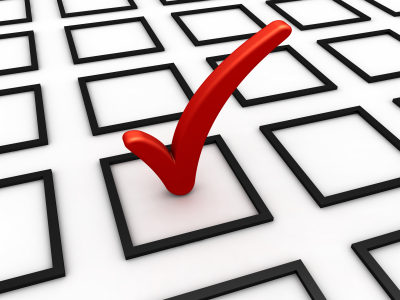 Once you have a budget, limit your search to items that fit within your budget. Look for items that extend the promotional message and support your brand. Look for items that are relevant to your target and related conceptually to your business.
Once you have a budget, limit your search to items that fit within your budget. Look for items that extend the promotional message and support your brand. Look for items that are relevant to your target and related conceptually to your business.
Look beyond premium websites – pick up the phone and call a couple advertising specialty firms. Describe your promotion and give your budget requirements to a sales rep. Let them get back to you with some promotional item recommendations.
Use your favorite online search engine and search for items that are related to your promotional theme. Almost any item can be labeled, imprinted or packaged with your logo. Don’t restrict where you look for ideas.
Ask coworkers for ideas.
Here are a few idea starters:
- Your goal is to select an item that is useful and has real value to your prospect.
- High impact, low-cost premiums are informational items related to your product – article reprints, special reports, free audio or video download codes that can be redeemed on your website, or computer software. Other more expensive informational premiums include industry-specific DVDs and books.
- If an informational premium isn’t suited to your business and target customers, consider a specialized tool, something that will make your prospect’s job or life easier.
- Seasonal items have high impact at the beginning of the season – summer items are great ideas in May and June, but far less effective in August.
- Tote bags – everyone at the show will be on the lookout for a really great tote bag. Avoid the economy or value tote bags – they will be passed by or discarded when attendees are offered quality bags. This is a nice addition to an informational premium.
- Inexpensive items can be appealing if they are high quality and useful. For example, a tin of quality, mini breath mints is a popular item at B2B shows.
- Items that incorporate new technology are popular everywhere. For example, LED flashlights are a highly valued item.
Put together a list of candidates
First, put together a list of all the possibilities then cross off the following items:
- Eliminate low quality items. It is better to skip the free gift than to give a valuable prospect a pen with your logo on it that doesn’t work or leaks all over their hand.
- Avoid generic premiums that have nothing to do with your business except your logo: sports water bottles, pocket office kits, picture frames, etc.
- Give away items that people can not easily transport home. If most attendees fly into the show, avoid large items like golf umbrellas or breakable items.
- Forget about heavy and bulky items unless you plan to deliver them to your prospects’ offices later. Just think about carrying this item around the showroom floor for hours then bringing it home on the plane.
Selecting the item
Now comes the fun part – picking the item. Look over your list and see if a few items really support the promotional theme and desired brand position. Pick the top 3 to 5 items.
Review the finalists with your sales team and a few of your customers to see if there is a consensus pick. If you have a tie, select the least expensive item.
The finishing touch
Make sure to incorporate your message on the item. Have it imprinted, labeled or packaged with your company logo, name and contact information. Don’t let there be any doubt where it came from.
Everything in your exhibit has to work to build your brand and acquire new business. A trade show premium is no exception. If it isn’t winning you new customers, take the money and put it to good use closing sales.
Replacing Trade Show Giveaways With Promotions That Work
For decades companies were satisfied to give away trade show premiums that built brand awareness and didn’t do much more. Company logos appeared on everything from camouflaged jackets to rubber ducks. Most ended up discarded or given away to friends and family. Now marketers are reexamining their strategies and replacing free gifts with promotions.
A promotion is an incentive to act – it is something that will directly generate qualified leads and drive sales.
Building a successful promotion
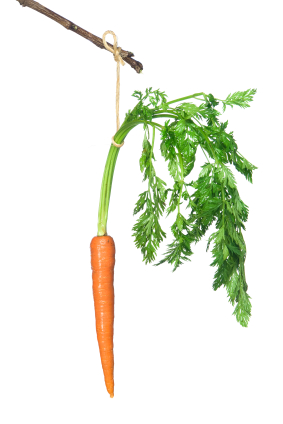 The first step is to define your target customer and decide what you are trying to accomplish. Every business wants to increase brand awareness but now marketers want promotions that also motivate an action. Do you want to get leads, get people to try your product, make sales at a show, drive people to your website, or generate retail traffic?
The first step is to define your target customer and decide what you are trying to accomplish. Every business wants to increase brand awareness but now marketers want promotions that also motivate an action. Do you want to get leads, get people to try your product, make sales at a show, drive people to your website, or generate retail traffic?
Once you have defined your goal, design a promotion to target your prospects. Don’t just give something to everyone who passes by your booth unless everyone is a great prospect. General giveaways generate unqualified leads and your real prospects will be hard to find in the mass of names gathered at the booth. Most sales reps won’t even bother to follow up on any of the show leads because it is too hard to find the qualified prospects.
Structure the promotion in a way that starts a dialog with target customers and encourages follow-up conversations or contacts.
Does your promotion require a free gift, a sales incentive or both?
Some promotions work best with a sales incentive – discount coupons, gift certificates for future purchases, gift with purchase or other sales promotion offer. Some companies have found that combining a sales incentive with a premium giveaway is their unbeatable combination. Make sure to get your prospects’ names, email addresses and phone numbers, and some additional information that identifies the best prospects. If you choose to use a giveaway, capture the prospects’ names and contact information in exchange for these gifts. Also, take the opportunity to ask one or two questions that will make the qualified prospects stand out.
Games, Drawings and Prizes
Games and drawings are very popular and will engage people. The trick is to design a contest that will appeal mostly to qualified prospects. The easiest way to create a focused game or drawing is to select a prize that will mostly interest a qualified prospect. So never give away money or TV sets. Instead, think about giving away your product or a related item as a prize. Then increase participation in the contest by giving away lots of prizes throughout the show.
Track your results
Establish a way to measure the success of your trade show promotions. If you used a sales incentive, code it so that you know what the show offer actually generated. If you gave away a premium item, after the trade show, survey your customers and your exhibit team about how well it worked.
Work to answer these questions:
- Did the offer attract qualified prospects to the booth?
- Did the promotion achieve your sales and/or lead goal?
- Was it profitable?
- Did your prospect and customers find the premium and/or sales incentive useful? Or did they discard or forget it?
- Did the promotion, sales incentive and/or the premium project the right corporate image?
Selecting a great premium
There are plenty of exciting trade show giveaways that will make your promotion a success. Learn more about creating promotions that work in “Part 2 – Selecting a Great Premium”.
DOs and DON’Ts for Effective Trade Show Booths
So in the past few weeks we’ve talked about a myriad of trade show topics: how to entertain attendees, how to develop an effective trade show marketing strategy, tips on how to work your booth, how to reduce costs, and ways to plan before leaving for your trade show. Let’s take a few steps back and determine what are a few of the DOs and DON’Ts of pulling together a successful, enticing tradeshow exhibit.
 Preparing for a trade show, especially for small companies, can be a daunting task. Deciding what to include and how to set up an actual exhibit/display is one of the fundamental decisions you’ll have to make. First step is to contact the show managers and find out the size of the booth you will have, whether there is a wall space for your company sign, if there are electrical outlets available, and any other small items that you might be responsible for supplying.
Preparing for a trade show, especially for small companies, can be a daunting task. Deciding what to include and how to set up an actual exhibit/display is one of the fundamental decisions you’ll have to make. First step is to contact the show managers and find out the size of the booth you will have, whether there is a wall space for your company sign, if there are electrical outlets available, and any other small items that you might be responsible for supplying.
Here are a few other tips to keep in mind when creating your exhibit:
DON’T overstuff it. Product managers might want to display things that represent every brand or product your company offers. Partners might want their logo splashed all over your booth. Keep in mind that sometimes simpler is better. Booths overcrowded with displays, products, stands, etc., turn off prospective attendees and prevent you from quickly communicating why attendees should visit you.
DO simplify your message. Many exhibitors make the mistake of bombarding their booth visitors with marketing slogans. Instead choose the one core message you want to impart to potential customers and stick to that in terms of graphic presentations. Displaying fewer, but larger visual elements in your exhibit will reduce clutter and better garner an attendee’s attention and create a lasting impression.
DO focus on the cream of the crop. Instead of hauling your entire product line to a tradeshow booth and again cluttering your display, overwhelming visitors, and diluting your marketing message, showcase only your new and top-selling products.
DON’T rely on static displays. Any type of motion captures people’s attention as opposed to static displays. You can take advantage of this by playing a looping DVD on a widescreen TV or make use of a rotating display.
DO maintain a small, private area. If your booth is big enough, it’s nice to have a quiet, private area with a table and a few chairs to take attendees or promising prospects that might like to sit down and discuss your company and its product and services in more detail.
DON’T scrimp on carpet. This might sound silly, but after a long day of walking miles and miles on the unforgiving floors of huge exhibit halls, visitors will appreciate booths that have plush, padded carpet. And, so will your booth workers.
Win Over Your Prospect Before Giving Away Literature at a Trade Show
Should I Give Away Literature at My Trade Show?
This is probably the most common strategic question that an exhibit marketing professional faces. When asked for my opinion, my reply is “reluctantly”.
 The biggest problem with literature in the booth is not the cost, weight or other logistical problems, it is that the “do you have any literature” line coming from a prospect is the worst blow off that a booth staffer can get. Once the literature is handed to the attendee, it is very difficult to keep the conversation going. What’s more, a large portion of the literature ends up in the convention center trash cans.
The biggest problem with literature in the booth is not the cost, weight or other logistical problems, it is that the “do you have any literature” line coming from a prospect is the worst blow off that a booth staffer can get. Once the literature is handed to the attendee, it is very difficult to keep the conversation going. What’s more, a large portion of the literature ends up in the convention center trash cans.
You do need to have some literature available in the booth but you can extend a conversation and gather much more critical information from the prospect by offering to deliver or send the literature after the show. You come away with a completed lead card and have the opportunity to schedule a follow-up call or visit. Providing literature in the form of a DVD or other digital media has more perceived value and is more likely to be taken back to the office than traditional printed pieces.
Using this approach reduces costs in shipping, drayage, rental of literature racks and helps the environment by reducing the amount of brochures in convention center trash cans. We can help! Let’s Talk.
Archives
- July 2021
- June 2021
- May 2021
- April 2021
- October 2018
- September 2018
- August 2018
- July 2018
- June 2018
- May 2018
- April 2018
- March 2018
- February 2018
- January 2018
- December 2017
- November 2017
- October 2017
- September 2017
- August 2017
- July 2017
- June 2017
- May 2017
- April 2017
- March 2017
- February 2017
- January 2017
- December 2016
- November 2016
- October 2016
- September 2016
- August 2016
- July 2016
- June 2016
- May 2016
- April 2016
- March 2016
